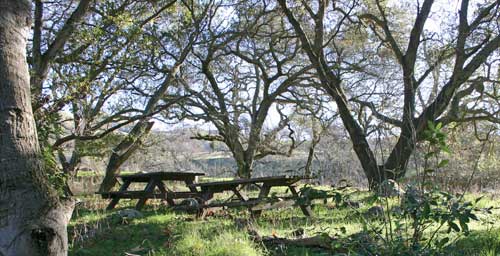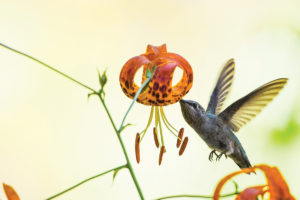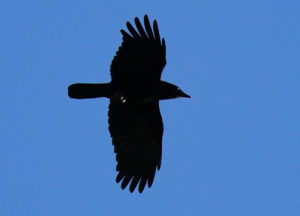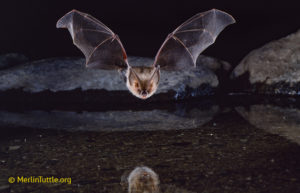It’s a beautiful spring morning in Sunol Regional Wilderness. Owl’s clover and Ithuriel’s spear bloom on the drying hillsides, and soaproot rosettes send up leaf after long, sinuous leaf. Acorn woodpeckers sing in comedic trills as they probe their granary trees for nuts, silhouetted against a bright blue sky. Alameda Creek is singing as well: A little low after a dry winter, its flow splashes musically over rounded serpentine cobbles washed down from their source at Little Yosemite.
There’s other song in the air too. A few hundred yards away, muffled slightly by the oaks and sycamores, a tenor voice belts out a plaintive ballad in Spanish, a flare of brass rounding out each verse. A car door slams shut; the song is quieted momentarily, and then rises in volume again when the driver opens the rear doors to unload the cooler and boxes of food. Before long the scents of moist creekside earth, sun-warmed coyote mint, and bay laurel on the hillside above are joined by the tang of burning charcoal and seared meat. Picnic season has started; one by one the quiet spaces along Alameda Creek fill with people out to enjoy the sunny weekend in the company of family and friends.
Of the 55 parks administered by the East Bay Regional Park District, 30 offer areas specifically developed for picnicking. At last count, there were nearly 4,000 picnic tables in the district. More than a hundred picnic areas can be reserved in advance for large groups, with even more available for impromptu use. These areas range from the woodsy and informal, like the sites along Alameda Creek at the entrance to Sunol, to elaborately developed areas with permanent shelters, such as those at Quarry Lakes in Fremont, some of which accommodate 200 people.
For countless park visitors, picnic areas are the ideal safe place in the woods—separated from the noise of the city but just a short walk from park staff and facilities. Park supervisors estimate that some 1.6 million people picnic in the regional parks every year. In a 2005 survey in which the district asked people why they visit its parks, 23 percent said they came to have picnics—the second most popular reason, after “relaxing/escaping the pressures of everyday life” at 26 percent. The popularity of picnicking isn’t limited to the regional parks: When California state park planners commissioned a statewide survey in 2002, they found that over 75 percent of park visitors use picnic areas.
Park managers don’t really need surveys to tell them that picnicking is popular. They just have to go to work in the morning. Anne Rockwell, park supervisor at Crown Beach Regional Shoreline in Alameda, says that on prime picnic weekends the line forms before the sun comes up. “On the Fourth of July,” she adds, “they’re here when the gates open at eight, and they’ve been here since 5 a.m. staking out a particular picnic area.” Several other parks are also picnicking favorites, especially the waterfront and lake parks.
You might be surprised to learn, then, that for a time the East Bay Regional Park District deliberately deemphasized picnicking in its larger parks, part of a trend in which park managers across the country stressed wildlife and habitat protection over amenities for visitors. “When the district started in the 1930s,” says Chief of Park Operations Jack Kenny, “there was a vision that all of our parks would be very intensely developed, like Tilden. As the district grew in the mid-1960s and after, the priority was to acquire the land and provide access, but not to develop the parks as much. So you have parks like Briones and Sunol, where there is some picnicking, but the main priority was to acquire the land and then have people get out and experience the park, getting away from the picnic areas.”
- Nestled in the woods beside Alameda Creek, the picnic area at Sunol Regional Wilderness is among the least developed of the East Bay Regional Park District’s formal picnic spots. Photo by Sarah Anne Bettelheim.
Even some parks that had been established for years were changed to reflect this new way of thinking, says Kenny. In Redwood Park, for instance, which opened to the public in 1939, visitors were once allowed to drive a significant distance up Redwood Creek to the picnic areas that dot the bottom of the canyon there. In the late 1970s the road was closed at Canyon Meadow, a third of a mile from the gate. Six formal picnic areas on the other side of the fence have been walk-in-only ever since.
Jeff Wilson, who manages most of the parks in the Berkeley and Oakland hills, says there have been fewer picnic baskets per acre at Redwood since then. “There’s definitely not as much picnicking at Redwood as there was during the 1960s and ’70s. It tends to be more of a hiking, dog-walking, mountain bike park.” But people have discovered the charms of the walk-in sites, he adds, and those sites are used consistently. “People bring wagons [or] wheelbarrows; they know the drill. A picnic without automobiles nearby is kind of a rare thing.”
East Bay picnickers are a diverse lot, reflecting the communities they live in. District Assistant General Manager John Escobar says he thinks culture is the key to describing picnic area users. “People several generations removed from their immigrant origins tend toward a much more individualistic view of the parks and they go hiking,” says Escobar, “and the picnicking and lake parks tend to be used by groups that still have a strong family structure.”
Rockwell, of Alameda’s Crown Beach, says, “We have a large Tongan family that at one point used to take over one whole section of the park. There were so many people in the family, so many generations. We see people grow up over the years, coming here every Fourth of July, every Labor Day. We’ve had people who’ve brought their own fire pits, set up a little kitchen in the picnic areas, teams of women making tortillas.”
Some of the picnickers aren’t completely familiar with urban American mores, and their park use provides an opportunity for mutual cultural learning. “A group of Afghan people who come every year,” says Rockwell, “showed up at first with a live goat that they were going to slaughter and then cook up over an open fire.” Rockwell chuckles in recounting the story. “We don’t want people to slaughter their animals here. We have it worked out that [now] they bring their animals already dead, and they’ve created a fire pit that’s a little safer and they have a rotisserie that they turn all day,” she says. “They don’t use the time just for cooking the goat, of course. The men sit together and smoke cigarettes, and there’s storytelling.”
With parks from Antioch to Fremont and Richmond to Livermore, the landscapes of the park district are as diverse as the people who use them. Still, they share a dry, east-wind season in late summer and autumn, when all but the smallest, most developed parks are vulnerable to wildfire. Inviting picnickers to show up in the parks with bags of charcoal and matches might seem risky; when fire danger is high, the district prohibits grilling and sometimes closes parklands to all recreational uses. The measures apparently work, since district staff don’t recall any wildland fire being started by picnickers.
But picnic areas also affect surrounding wildlife and plants in subtler ways. A measure as simple as putting in irrigated lawns—the district calls them “meadows”—can have unanticipated consequences. Some of these are negative: displacement of existing organisms is an obvious result of putting in a lawn, and water use to keep the turf alive is another. Urban lawns are a major source of pesticide and nutrient pollution of Bay Area creeks, but the district’s commitment to integrated pest management limits this impact: Pesticides are rarely if ever used here, and fertilizing is kept to a minimum.
Some results of maintaining the picnic area lawns are hard to place with confidence in either the cost or benefit column. Take the Botta’s pocket gopher, Thomomys bottae. A native burrowing rodent, T. bottae is reviled by East Bay gardeners for both its consumption of root vegetables and its tunneling habits, which result in little six-inch “volcanoes” of discarded subsoil in inconvenient places. In Bay Area wildlands, pocket gophers—so called for the fur-lined cheek pouches in which the animals can store food—are important organisms, tilling and aerating the soil as they tunnel. They do even better in irrigated lawns, where they stay active during the hot dry summers, breeding as often as four times a year. In short, watering lawns is a good way to raise a bumper crop of pocket gophers.
Where there are rodents in abundance, other animals will show up to eat them. Alan Kaplan, a retired naturalist who worked at Tilden Park for 33 years, has seen great blue herons, typically wetland predators, come up to the picnic area at Tilden’s Indian Camp to take advantage of the subterranean bounty. “When the gophers come up from their tunnels, herons will feed on them. In the evening hours through the spring and summer, you’ll see great blue herons at Indian Camp on the lawn obviously stalking gophers. I’ve seen one heron with two gophers in its throat—they’re big lumps—and looking for a third one.”
Kaplan points out that picnic areas offer some of the best opportunities for wildlife observation in the parks, due to edge effects where scrub or forest cover meets lawn or parking lot. “There’s a multiple habitat there that sometimes promotes more animals. Sometimes we’ve had the best luck in our birding just walking around Indian Camp’s parking lot.”
Those edge effects are a double-edged sword, to strain a metaphor. Songbirds that nest near forest edges are more susceptible to brood parasitism by brown-headed cowbirds: The cowbirds lay eggs in other birds’ nests, and the hatchlings must then compete with a brawny adoptive sibling. Cowbirds often frequent low stands of grass and forbs, such as those mowed picnic area meadows. Edge-nesting birds near picnic areas face the additional potential problem of predators with subsidies. Whether the setting is inner Coast Range grassland or redwood forest, the one ecological trait picnic areas share is that people bring in food. Some of that food gets left behind, sometimes scattered, more often piled into trash cans. Of the animals most likely to take advantage of that bounty, some also raid songbird nests for eggs or hatchlings. Examples include ravens and jays and the usual mammal suspects: rats, raccoons, feral cats.
Nest predation by scavenging animals may pose a serious threat to some local birds. From 1997 to 2000, researchers from PRBO Conservation Science and Sonoma State University studied Wilson’s warblers’ nests in the Muir Beach area. The Wilson’s warbler, which also frequents East Bay parks, is causing conservationists concern due to population declines in several western states. The Muir Beach study provided a glimpse into that decline. Of 90 nests monitored by the researchers, 54 failed due to nest predation. The researchers didn’t prove a direct link between picnic trash and nest predators, but they did conjecture that a nearby picnic area could contribute to the high predator density in the study area.
Meanwhile, other species are simply frightened away from potential habitat by the presence of people and their pets, says Ron Russo, the district’s longtime chief naturalist until his retirement in 2003. For example, ringtail cats (which are actually related to raccoons) are quite sensitive to scents left behind by family dogs marking their temporary territories at local picnic spots. These cat-size predators will abandon an area even though their nocturnal habits mean they would rarely encounter people or dogs directly.
The scavengers that are attracted to picnic areas occasionally suffer direct consequences from gleaning our trash. Kaplan recalls that in the mid-1990s, a number of skunks were injured due to the container design of one particular brand of yogurt. “The Yoplait yogurt container, it’s narrow at the top and wide at the bottom. The skunks would stick their head in and then they couldn’t get out.”
Most animals are content to forage through trash after the picnickers have gone, but raccoons often insist on direct interactions. “In past years at the Indian Camp picnic area at the entrance to the Nature Area,” says Kaplan, “raccoons have become almost aggressive. It’s hard to drive them off sometimes.” The district had to trap and relocate the worst offenders. “They used to stand up on their hind legs, reach up onto the hot grill and pull raw chicken off the barbecue,” says Jeff Wilson. “It wasn’t so cute.”
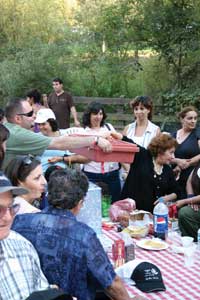
- Charity prize drawing at Lake Chabot Regional Park, during the family picnic of the Birzeit Society, a non-profit organization that provides services for the town of Birzeit in the West Bank. Photo (c) 2007 Wisam Daoud.
Though providing wildlife with food—on the grill or in the trash can—is inadvisable, it does create an opportunity to observe animals’ problem-solving skills. In some parks, crows and ravens have mastered special techniques to retrieve the tempting garbage from the deep recesses of a trash can’s plastic liner. “There’s a healthy population [of ravens] around the ridgelines,” says Wilson. “They like to hang around picnic sites and empty the garbage cans by pulling the plastic liners up with one foot at a time until they get to the bottom, and then yanking it so that it falls down onto the lawn. It’s hilarious, but it’s really frustrating for the rangers, because it looks like we haven’t picked up [people’s] garbage.”
Rockwell recounts similar behavior among the crows at Crown Beach’s picnic areas, though she says members of that smaller corvid species tend to work in pairs, with one hauling plastic and the other picking through the trash in the liner. In recent years the district has been installing trash cans with snap-tight lids to keep animals from foraging in the trash, which is at least a temporary solution—until the crows learn to use crowbars.
Do the wild goings-on in the picnic areas entice picnickers to explore the more remote sections of the parks? Kaplan certainly worked to make that happen, leading hikes in the nature area and encouraging picnickers to look at the small plants, native and exotic, that make up the irrigated picnic meadows.
Of course, many families will continue to turn out just once or twice a year to claim one of the district’s nearly 4,000 picnic tables for the Fourth of July or Labor Day. And that’s fine. But once picnickers learn about the wildlife in the immediate vicinity of the picnic area, the trails may entice them all the more, and maybe they’ll venture a walk in the surrounding hills.
Just make sure someone stays behind to keep the raccoons out of the chicken.

.jpg)
